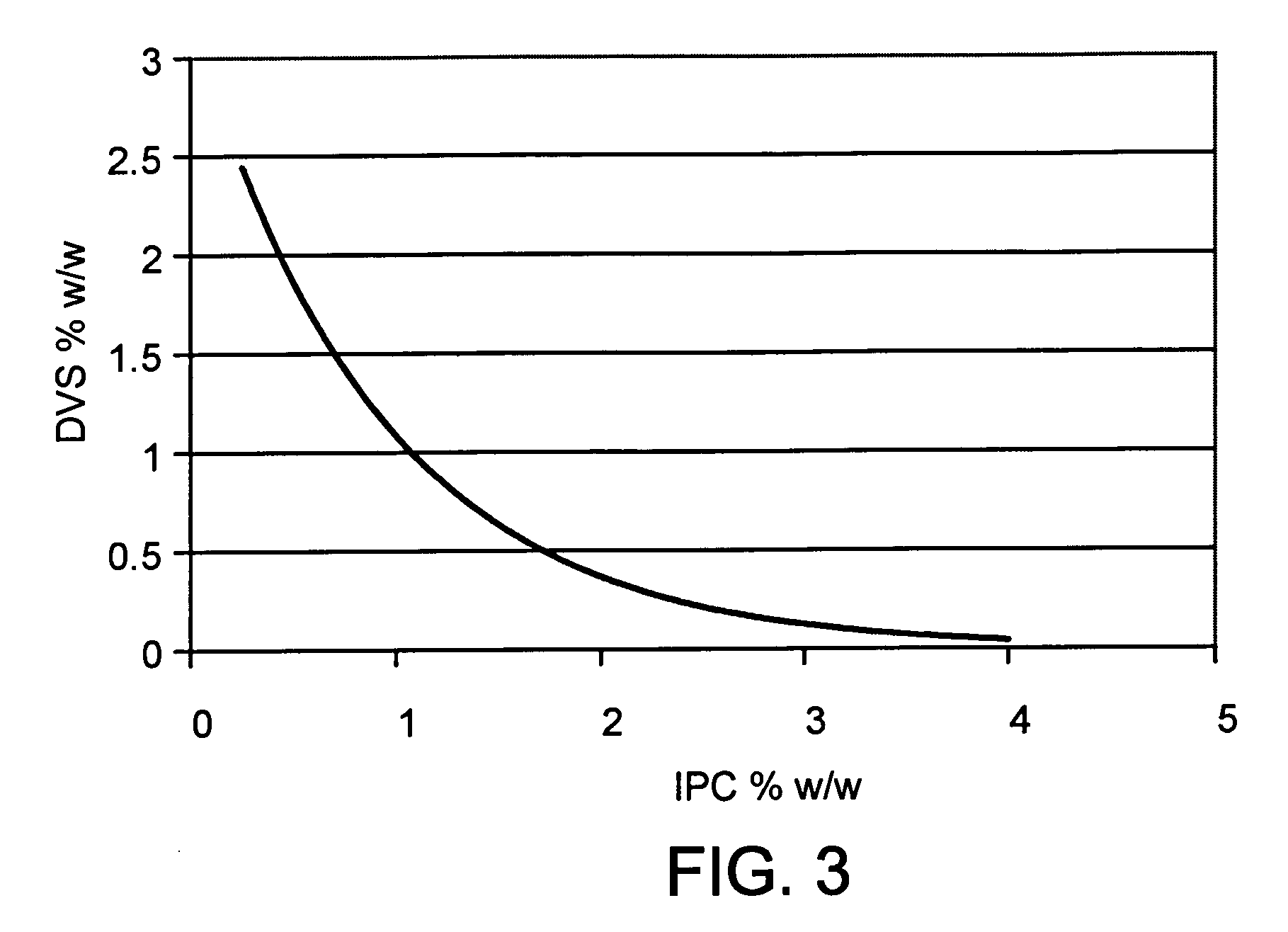Polymeric materials, their preparation and use
a polymer material and polymer technology, applied in the field of materials production, can solve the problems of non-elastic, non-cohesive, non-adhesive, etc., and achieve the effects of high cohesiveness and elastic, enhancing mechanical properties, cohesion and elasticity of the resultant materials
- Summary
- Abstract
- Description
- Claims
- Application Information
AI Technical Summary
Benefits of technology
Problems solved by technology
Method used
Image
Examples
example 1
0.75% IPC with Bacterially Fermented Sodium Hyaluronate Medium MW
[0073]This example illustrates the preparation of a gel with an IPC of 0.75% and the DVS:Pol ratio of 2:1.
[0074]To medium MW bacterially fermented sodium hyaluronate powder (about 1.7 MDa, 5.30 g) was added sterile water 525.7 g in a sterile reactor vessel and mixed on an orbital shaker for 18 hours at 4° C. To this solution, at room temperature, was added sterile filtered 1M NaOH solution (60.00 mL) affording a polymer solution having NaOH at 0.1 M concentration. To the polymer solution was added DVS (7.60 mL) with mechanical mixing (300-500 rpm) and the mixture was stirred for 25 minutes at room temperature. The reaction mixture was placed into dialysis tubing and then stored at room temperature for 4 hours affording a gel. The gel was then washed against sterile neutral saline (10.0 L) containing HCl solution (7.70 mL) until the pH was between 2.3-2.8. The gel was then washed extensively with neutral saline until th...
example 2
0.5% IPC with Hylan Fibers
[0075]This Example illustrates the preparation of gel with an IPC of 0.5% and a DVS:Pol ratio of 4:1.
[0076]To a 0.75% solution of hylan sodium salt (about 6 MDa, 265.6 g) was added sterile water (133.1 g) and then mixed on a roller apparatus for about 18 hours at room temperature. Sterile filtered 1 M NaOH solution (45.00 mL) was added and the fluid mixed on a Turbula T2F end over end shaker for 10 minutes. Then DVS (2.50 mL) was added and mixing was continued for 30 minutes more. The reaction mixture was then transferred into dialysis tubing and stored at room temperature for 4 h. The resulting gel was washed with neutral saline containing 12 M HCl solution (6.50 mL) until the pH was about 2.3-2.8 and then washed extensively with 3.0 L portions of neutral saline until the pH was about 6.0-6.5. The gel was then washed extensively with 3.0 L portions of neutral saline to which has been added 4.0 mL of neutral saline containing 0.5M NaHCO3 until the pH was ab...
example 3
0.38% IPC with Hylan Fibers
[0077]This Example illustrates the preparation of a gel with an IPC of 0.38% and a DVS:Pol ratio of 6:1.
[0078]To hylan fibers (sodium salt) (1.34 g) was added sterile water (261.9 g) and the mixture was mechanically stirred at room temperature for 18 hours. To the polymer solution, at room temperature, was added 1 M NaOH solution (30.00 mL) affording a polymer solution having NaOH at 0.1 M concentration. The polymer solution was mechanically stirred at 300-500 rpm for 10 minutes. To this polymer solution was added DVS (1.940 mL) suspended in de-ionized water (0.880 mL). The reaction mixture was stirred for approximately 30 minutes at room temperature and then additional DVS (3.800 mL) was added followed by mixing for another 30 minutes. The reaction mixture was poured into dialysis tubing using a funnel for a restricted wash and stored at room temperature for 3 hours in a closed container with a small amount of saline to provide some humidity and prevent t...
PUM
 Login to View More
Login to View More Abstract
Description
Claims
Application Information
 Login to View More
Login to View More - R&D
- Intellectual Property
- Life Sciences
- Materials
- Tech Scout
- Unparalleled Data Quality
- Higher Quality Content
- 60% Fewer Hallucinations
Browse by: Latest US Patents, China's latest patents, Technical Efficacy Thesaurus, Application Domain, Technology Topic, Popular Technical Reports.
© 2025 PatSnap. All rights reserved.Legal|Privacy policy|Modern Slavery Act Transparency Statement|Sitemap|About US| Contact US: help@patsnap.com



